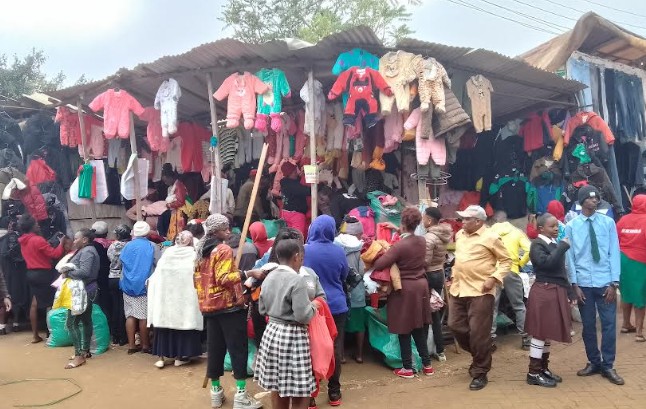Nyeri is among counties that recorded below-average rains during the March-April-May rainfall, according to a seasonal review of the 2025 long rain spell by the Kenya Meteorological Department (KMD).
According to the report dated May 30, 2025, this year’s long rains also came much earlier than expected.
The onset of the rains began on March 10 and March 16 and was recorded in the Highlands West of the Rift Valley, Lake Basin, Rift valley, Nairobi and isolated areas over the Highlands East of the Rift Valley, the Southern lowlands and parts of Isiolo County.
However, during the same period, 15 stations recorded above-normal rainfall,17 were near-normal and one was below normal.
“Near to above-average rainfall was recorded in most areas, with the highest totals in the western highlands and central regions.
However, Nyeri recorded below-average rainfall, and prolonged dry conditions were observed in the Coastal region and Mandera.
Rainfall distribution was generally good, though the season was marked with severe storms across several parts of the country, particularly in March, April, and early May.
The northern and eastern arid and semi-arid lands recorded significantly lower rainfall totals, with Lodwar and Mandera having the lowest.” reads the report by Director of KMD Dr David Gikungu.
“The majority of stations, seventeen in number, fell within the near-normal range of 75-125% of long-term averages. This category included major agricultural zones such as Kericho (115.2%) and Kisii (109.7%), suggesting generally expected rainfall patterns across these critical areas.
Nyeri station was the sole outlier, recording below-normal rainfall at 72.0% of its long-term mean, representing an isolated dry anomaly amidst otherwise normal to above-normal conditions across most of the country.”
However, the County is also expected to enjoy some occasional light showers during the June-July-August season that may be a relief to farmers as they await their crops to mature.
The weatherman forecasts the Highlands west of the Rift Valley, the Lake Victoria Basin, the Rift Valley, parts of the Highlands east of the Rift Valley, and the northwestern regions are likely to receive near to above-average rainfall.
Normally, rainfall during the June-July-August season is typically concentrated over the Lake Victoria Basin, the Highlands west of the Rift Valley, the Rift Valley, parts of the Highlands east of the Rift Valley, isolated areas of the northwestern region, and the Coastal Strip.
The remainder of the country is generally dry during this period.
“Highlands East of the Rift Valley (including Nairobi area), Nyandarua South, Nyeri, Kirinyaga, Murang’a, Kiambu, Meru, Embu, Tharaka Nithi, Nairobi counties and the eastern parts of Laikipia County are likely to experience cool, cloudy and foggy conditions with occasional light rains.
Occasional afternoon and night showers are also likely, especially during the month of June. The total rainfall amounts during the period are expected to be close to the long-term average for the season.
These areas are expected to experience cool conditions with daytime (Maximum temperatures) occasionally falling below 18 degrees centigrade.” continues the report.
Owing to the expected cold season in these regions, members of the public have been advised to dress in warm clothing to avoid contracting respiratory-related diseases such as asthma, pneumonia, flu and the common cold.
Residents in these areas have also been cautioned against using charcoal jikos in poorly ventilated houses owing to the risk of inhaling carbon monoxide gas, which is often fatal.
“Respiratory diseases like asthma, pneumonia, flu, and the common cold are likely to increase over Nairobi County and the Highlands East of the Rift Valley due to the expected cold conditions.
The public in these areas are advised to dress warmly and follow advice from the Ministry of Health. They are also advised to avoid using charcoal jikos in poorly ventilated houses, as they may produce carbon monoxide gas that is lethal when inhaled,” cautions the seasonal report.
“Malaria transmission is expected to be normal over the Lake Victoria Basin, the Highlands West of the Rift Valley, and Northwestern regions, though there may be an increase over the Coastal region due to the predicted warmer-than-average temperatures during the season.
Respiratory diseases and eye infections are likely to occur in the Northeastern region due to dust storms as a result of the windy and dry conditions expected.
Health authorities are therefore advised to preposition and redistribute medical supplies and insect-treated nets in the affected areas.”
By Samuel Maina





